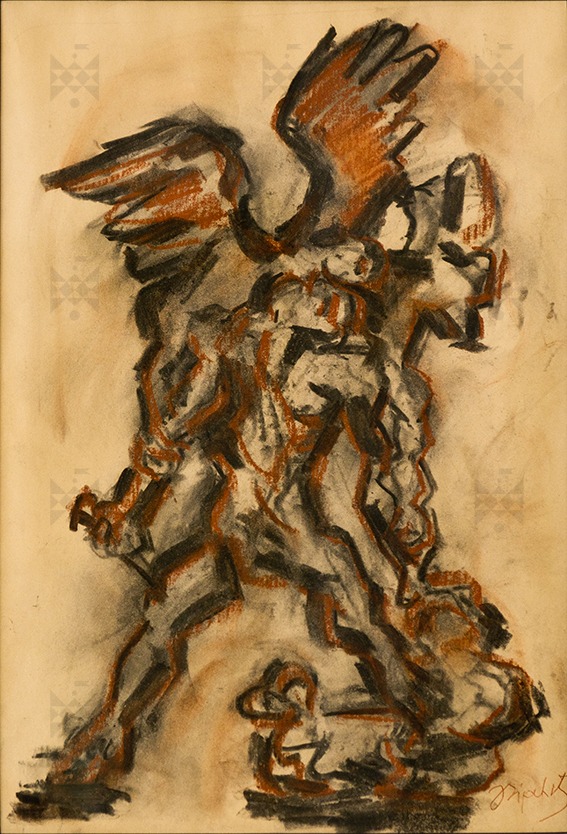EXHIBIT OF THE MONTH |
← |
Published: 2021-05-10
Jacques Lipchitz, sketch for Our Tree of Life, 1962, paper, coloured pencils, VGMJH
Drawings and lithographs for Jacques Lipchitz’s last monumental work Our Tree of Life that he created over a period of about 25 years hold a special place in the Jacques Lipchitz memorial collection stored at the Vilna Gaon Museum of Jewish History. The sculptor was commissioned by Hadassah Hospital to create a large sculpture to be erected on Mount Scopus, the highest hill in Jerusalem. This sculpture symbolises a personal transformation of Lipchitz when in the second half of his life he took to practicing Judaism. The artwork also became the embodiment of his dream, as the sculptor wanted to create a symbolic piece of art for Israel, which declared its independence.
The sketch, also known as the Sacrifice of Isaac, depicts four intertwined figures. The central figure is Abraham, clenched firmly with his feet on the ground, clutching a knife in his right fist and grabbing Isaac by the head with his left hand. The hand ready to strike is held back by an angel standing behind him, who looks as if having one body with Abraham. The figure of Isaac is intertwined with the figure of the Lamb lying nearby. Interweaving, merging, augmentation of figures when parts of one body turn into parts of another body represents a means of artistic expression which Lipchitz used in his early Cubist artwork of strict geometric forms and further developed in monumental sculpture in order to emphasise the tension, dynamics and drama of the composition.
The sculptor highlighted Abraham as the physical and conceptual trunk of the tree of life. In the final version of the artwork - a sculpture - three patriarchs stand above Abraham, and at the top of the sculpture there is Moses looking at the Decalogue plates, surrounded by the flames of a burning bush, resembling a menorah in its shape. Art critics have referred to the sculpture Our Tree of Life as a monumental quintessence of Judaism. Lipchitz himself did not live to see the day his sculpture was unveiled. The artist died unexpectedly in the spring of 1973. Nonetheless, his dream and his desire to be buried in Jerusalem was realised by his wife, sculptor Jula. The sculpture was erected and unveiled on Mount Scopus in 1978.
This year marks the 130th birthday anniversary of sculptor Jacques Lipchitz. The artist, who was born and grew up in Druskininkai, kept saying that without his Lithuanian roots, he would not have created the great trees of life.
Prepared by Aušra Rožankevičiūtė, museology specialist of the VGMJH
| ↑ | ← |

